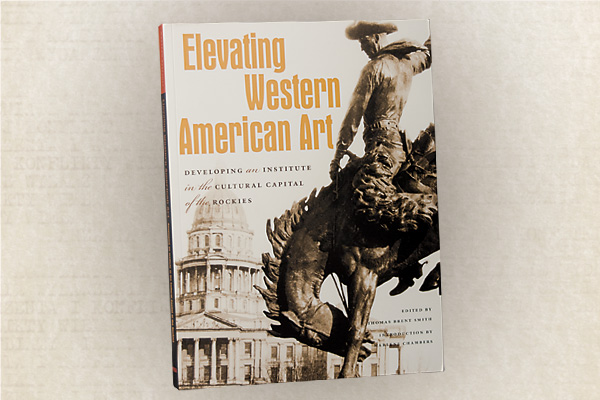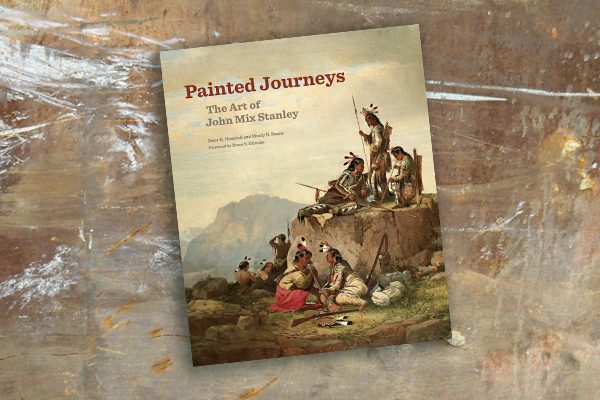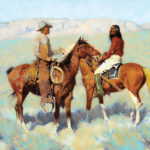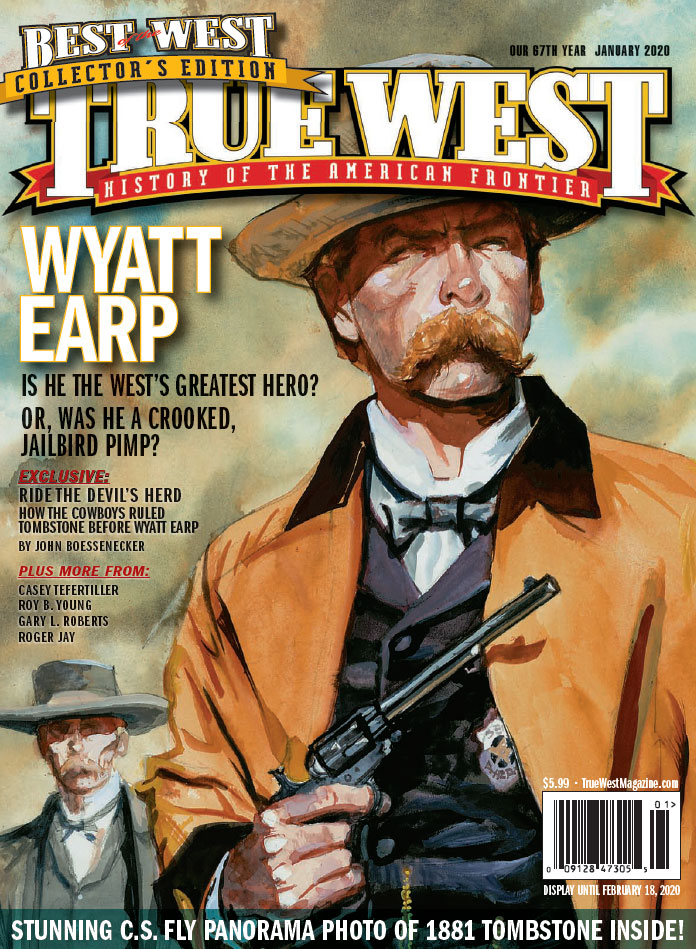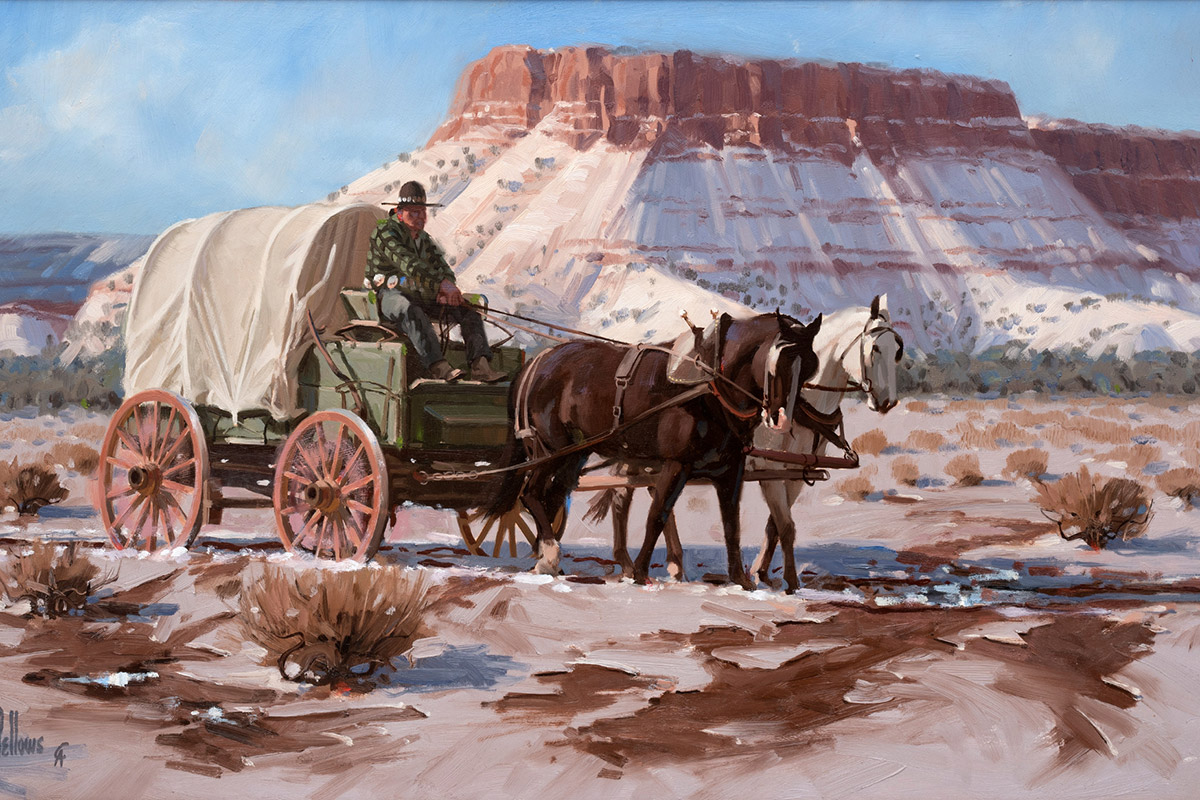
– All Artwork and Museum Images Courtesy the Eddie Basha Collection, Mesa, Arizona –
Eddie Basha, Jr. knew what love at first sight was—it happened to him twice, on the same summer day in 1972.
That was the day he met one burgeoning Western artist in the flesh and another through an art catalog, but there was no mistake, he was gobsmacked.
The romance had been set in motion a couple weeks earlier, when Eddie and friends had come from his summer home in Prescott to Sedona, Arizona, to meet Joe and Sharon Beeler. But they weren’t at home. That didn’t stop the party from picnicking on their patio and Eddie—being the curious type—wandering around the living room in their unlocked house. What he saw stunned him—Joe’s bronzes so perfect, the word “magnificent” keep going through his mind.
On the way back to Prescott, the group stopped for a drink at The Spirit Room in Jerome—a popular watering hole since before statehood—and Eddie finally reached Beeler by phone. He offered to buy three of Beeler’s bronzes, perhaps sounding like a seasoned collector. In reality, the 33-year-old Basha was just doubling his collection with these purchases. (Joe Beeler would always get a kick out of recounting that first sale to Eddie, musing, “On reflection, purchasing art from a bar in Jerome must have some implications.”)
And then came the day when Eddie Basha drove to Sedona to collect his first Joe Beeler bronzes and to meet face-to-face.
There was an instant rapport. The two men liked each other right away, but then, both were known as exceptionally likable men. Eddie would be remembered by his native state as an “Arizona treasure” with a “heart as big as the state.” Joe would be remembered by Western author Don Dedera as “that rare person who can boss around somebody else’s dog.”
As the men got to know one another that day in 1972, Joe shared a catalog from the recent show of the Cowboy Artists of America—a group he helped create in 1965 at the Oak Creek Tavern in downtown Sedona.
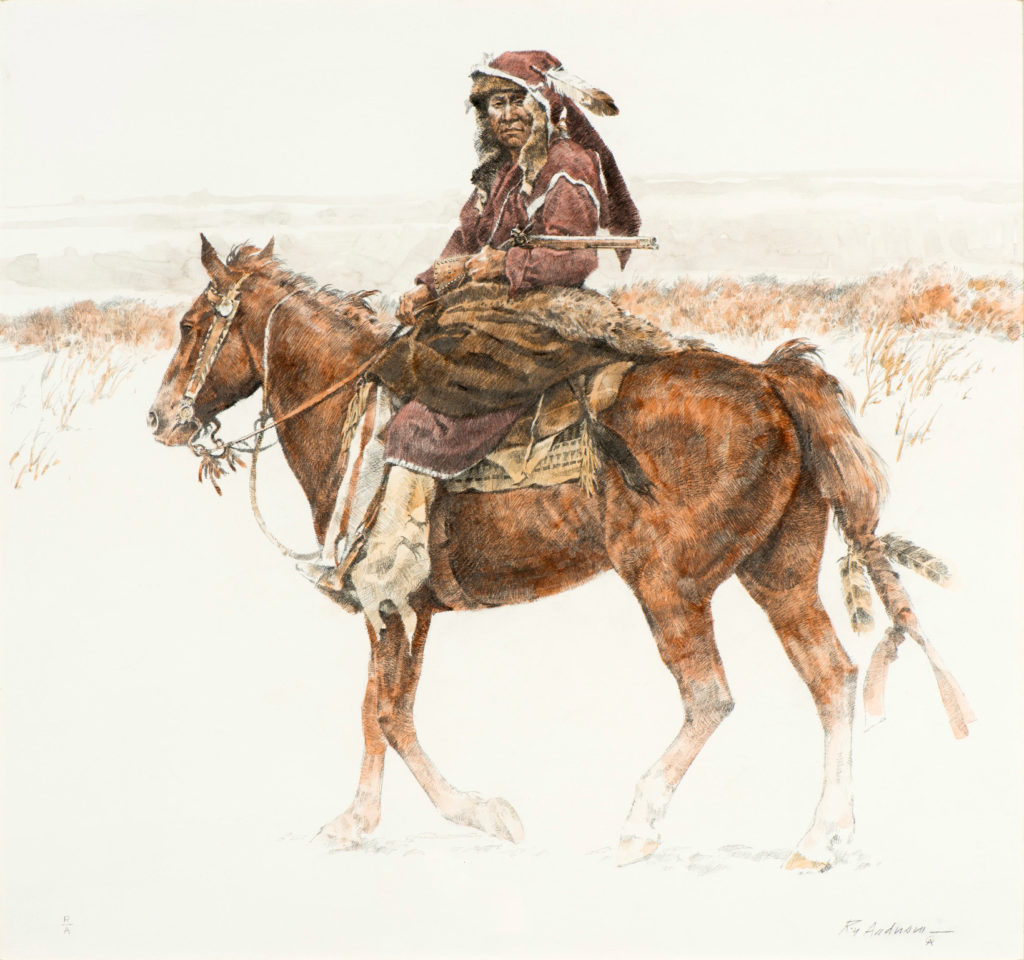
As Eddie recalled, when paging through the catalog and coming to a painting by John Clymer, he “went bananas.”
He tried to call Clymer in Jackson Hole, Wyoming, but they didn’t connect. And then a couple months later, Eddie was perusing the O’Brien’s Art Emporium in Scottsdale when he was taken by a painting of a buffalo. He had no idea of the artist—it was the subject that drew him. He remembered being euphoric when he discovered it was a Clymer. The price tag was $9,000. Eddie needed credit to cover the cost. He’d go on to own many of Clymer’s most important paintings—most of them considered “10s.” And he’d forge an intimate friendship with John and Doris Clymer, just as he and his family did with Joe and Sharon Beeler.
Then he discovered others who moved his heart and inspired him to write a check. He was particularly partial to the artists aligning themselves with the Cowboy Artists of America, and he made himself a goal: “It was my intent to acquire the minimum of one of each Cowboy Artists’ work,” he’d recall years later. You have to wonder if he ever giggled over how modest that goal was compared to what he’d bring home.
By the time he died in 2013, Eddie Basha had amazed one of the largest privately owned collections of contemporary Western American and American Indian art. He became known as “The Patron Saint of Western Art.” And true to his heart, he created a free, public gallery to showcase his collection in Chandler, Arizona.
“Eddie loved history and this collection was living history to him,” notes his widow, Nadine Basha.
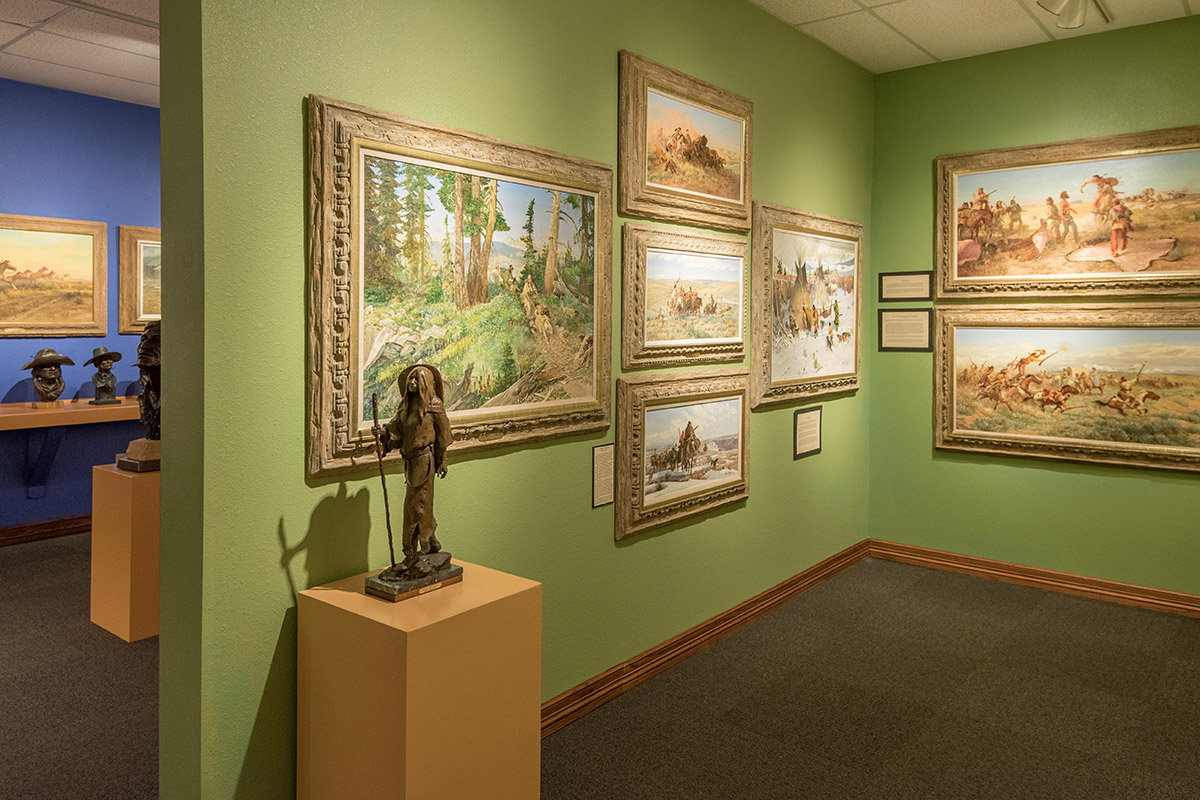
But no one can deny there was a definite “thrill of the hunt” in his collecting. As the Cowboy Artists shows grew more famous—hosted by the Phoenix Art Museum from 1973 to 2011—the frenzy to get the choice pieces grew so strong, the museum created a “lottery” for sales. Everyone interested in a painting could add their name—only once—to the pot, and whoever’s name was drawn would have the honor of writing the check. Eddie Basha never liked those odds, and the stories are legendary about the “army” of family and friends he’d assemble to put their names in all the pots of all the pieces he wanted. He usually went home with at least a couple of them.
“The most dangerous place in the world was between Eddie and a painting he’d want to buy,” says Brad Richardson of Scottsdale’s Legacy Gallery.
Longtime Phoenix Art Museum Director Jim Ballinger remembers fearing Eddie was angry at him the first year the Cowboy Artists were in Phoenix. Instead of his usual affable greeting, Eddie just whizzed on by, ignoring Ballinger. Nadine had to explain her husband: “Oh, he’s focused.” Ballinger saw the same pattern year after year, as Western art caught on and brought in seven-figure sales.
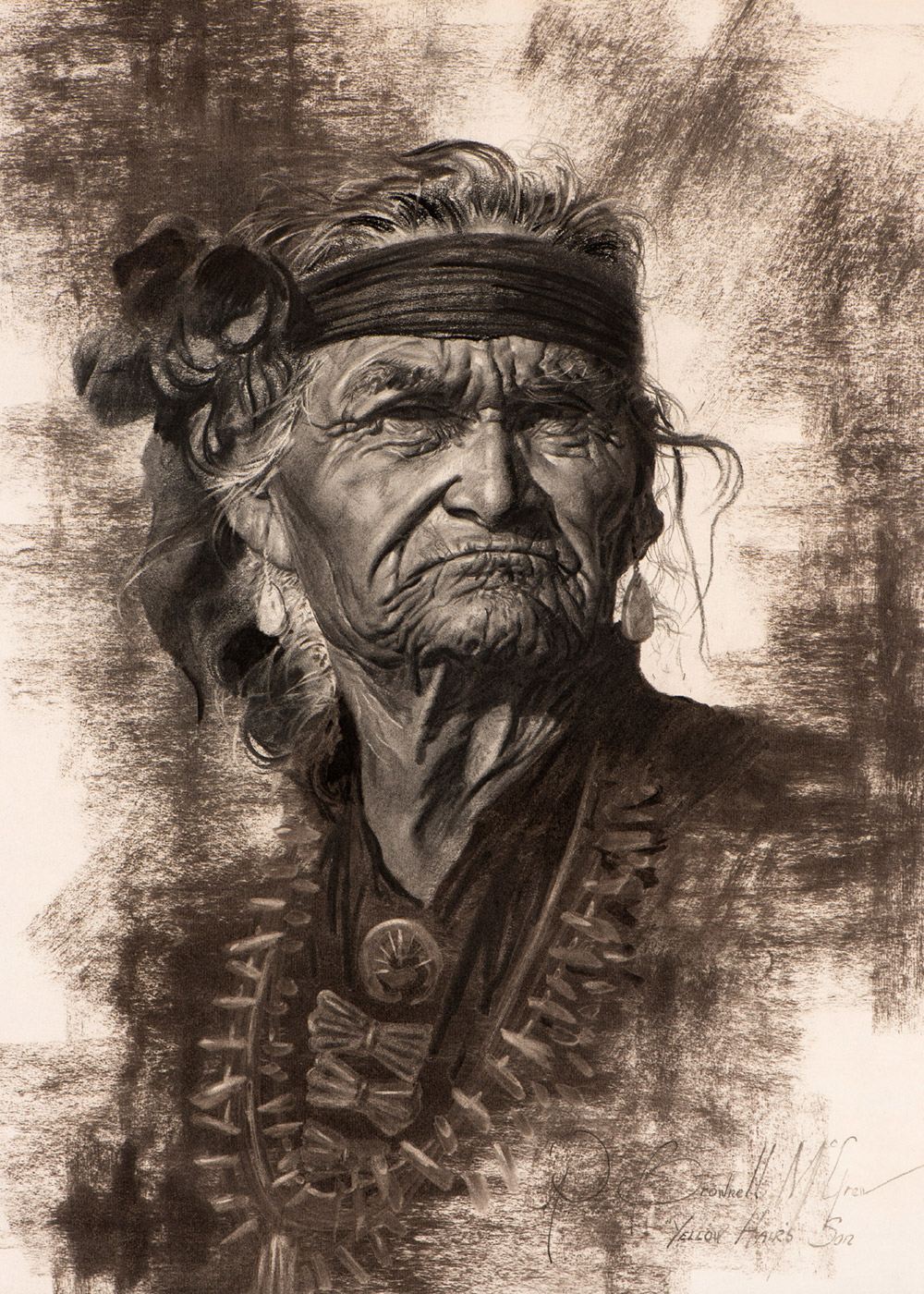
Arizona in the mid-1950s.
Eddie always said he owed it all—his love of Western art, his zeal for collecting, the gallery he’d create—to his dad’s youngest sister. Aunt Zelma inspired Eddie, first getting him interested in art when he was a boy as she babysat, and then pushing him to create a hobby as he took over the family grocery business in 1968. In her honor, he named his showplace the Zelma Basha Salmeri Gallery.
The gallery opened in 1992 in Chandler at the original Bashas’ grocery store site that is now its corporate headquarters. Eddie annexed a storage area, measuring 2,277 square feet, had it cleaned out, and opened his collection free to the public so they could share the exciting history he adored, with its grandeur and strength.
Over the years, the space has been expanded and remodeled several times, so that today it covers 11,000 square feet of floor space and 27,000 square feet of display space. Within its walls are more Joe Beelers—sculptures, paintings and personal drawings he made for his “brother” Eddie over the years—and more John Clymer paintings than can be found anywhere else. But the gallery also contains the work of an entire cast of renowned Western artists, including Roy Andersen, Harely Brown, Cecil Calnimpetwa, Greg Campbell, John Coleman, Deborah Copenhaver and Fred Fellows, Martin Grelle, Maria Martinez, Bill Nebeker, Bill Terpning, Baje Whitethrone and dozens more.
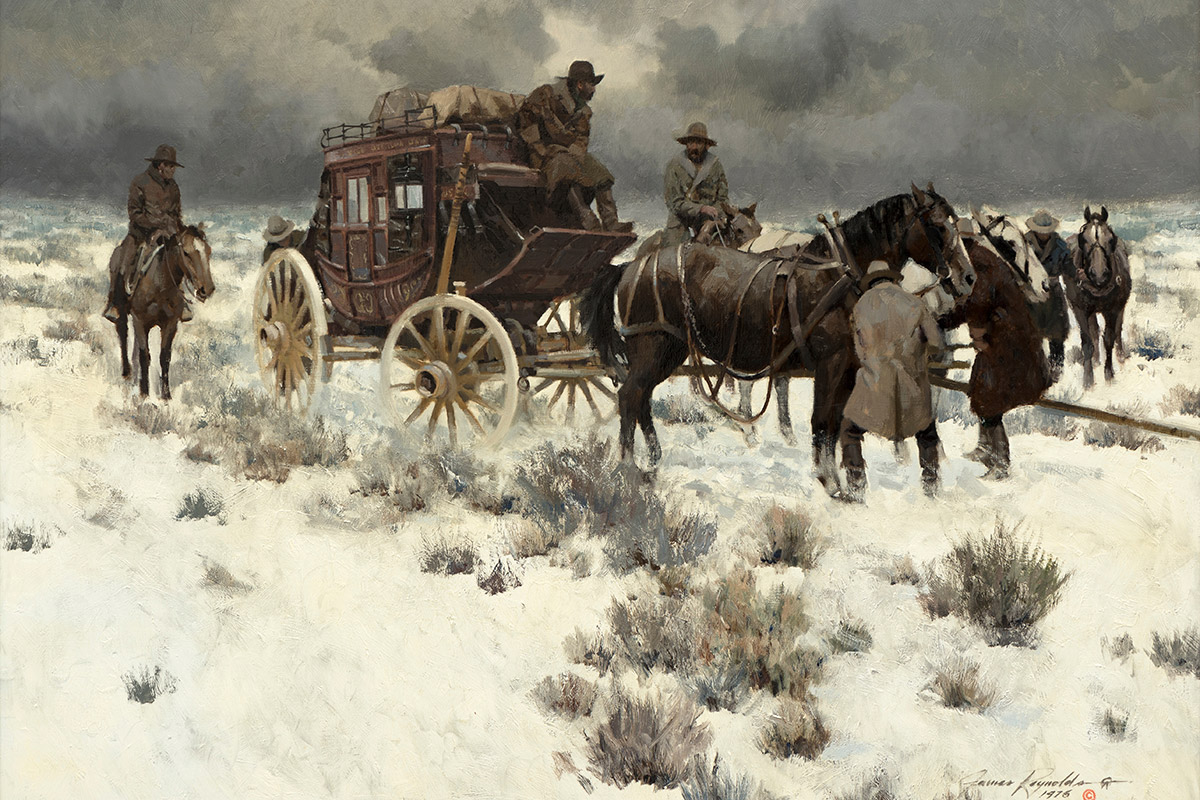
In all, more than 3,000 pieces fill the gallery, including the first painting Eddie ever bought: a Don Doxey still life of a leather jacket thrown over a chair. “I bought it because it reminded me of my father,” he said.
That tells a lot about Eddie Basha’s approach to amassing such a treasure trove: “I never bought art as an investment,” he said. “I always bought as a collector.” And to be certain everyone understood just how personal this was, he declared, “This is the essence of my life.”
Experts agree. “Eddie had no peer as a collector,” notes historian Don Hedgpeth. “He had a tremendous taste for art,” notes artist Fred Fellows. “If not for his patronage, Western art would never have become what it is,” says Joe Beeler’s son, Jody.
Historian B. Byron Price admits he is in “hog heaven” in the Basha Gallery. “His collection is the history of Western and native American art. I can see people are overwhelmed and can’t absorb it all—it’s like taking a drink from a fire hose.”
For the artists he collected, Eddie Basha was like “royalty,” as John Coleman put it. Or, as Harley Brown noted, “An Eddie Basha thumbs-up wasn’t a trivial moment. Artists would flip. It was like being invited by Clint Eastwood to be in a movie.”
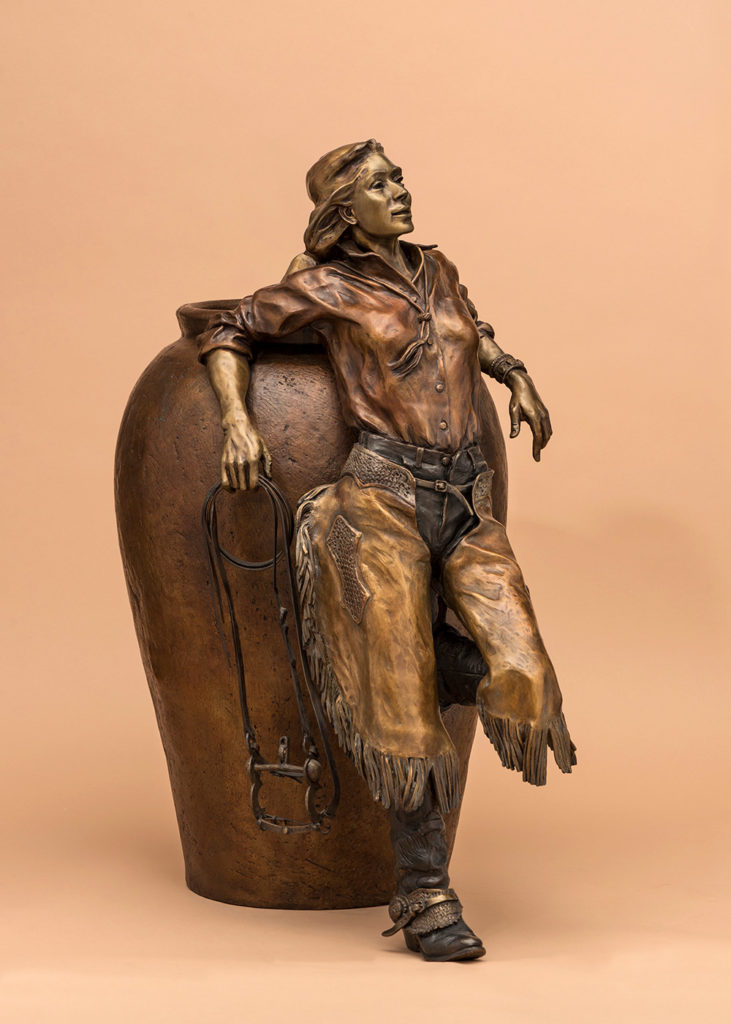
art in the Eddie Basha Collection.
For gallery visitors there is amazement that one man could gather such quality art over a lifetime. Eddie was particularly happy that Chandler fourth-graders tour his gallery every year. “This gallery is allowing us to continue to pass forward to the next generation the importance of the West,” said Dana Melcher, art coordinator for the Chandler Public Schools.
In 2000, Eddie was named an honorary member of the Cowboy Artists of America—a plaque noting the honor hangs at the entrance of his gallery. In 2001, the gallery won the Arizona Governor’s Arts Award. In 2011, True West named it the “Best Western Art Gallery.” It is typically open Monday through Friday from 9 a.m. to 4 p.m. at 22402 S. Basha Road, Chandler, Arizona.
An art book about Eddie and his collection—showcasing many of the outstanding pieces—is scheduled for publication in 2020.
Jana Bommersbach is a True West editor and author of seven books. Her eighth will be the upcoming biography of Eddie Basha and his amazing art collection, now in production and designed by renowned artist Carol Harlason.

